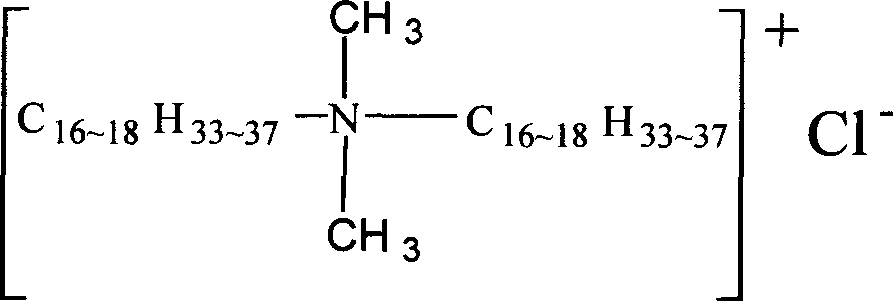Process for preparing polycarbonate /acrylonitirle-ternary ethyl propylene rubber-styrene resin / laminated silicate nano composite material
A technology of EPDM rubber and nanocomposite materials, which is applied in the field of polymer nanocomposite material preparation to achieve the effects of increasing strength and modulus, improving flame retardancy and high production efficiency
- Summary
- Abstract
- Description
- Claims
- Application Information
AI Technical Summary
Problems solved by technology
Method used
Image
Examples
Embodiment 1-3
[0030] (1) Organic modification of sodium montmorillonite. 10 parts of sodium-based montmorillonite, 1000 parts of dispersion medium water, 10 parts of dimethyl dihydrogenated tallow ammonium chloride, vigorously stirred at 60°C, and carried out cation exchange reaction to obtain organic montmorillonite, which was vacuum- Dry in an oven at 80°C for 24 hours before use.
[0031] (2) Add organic montmorillonite and polycarbonate, acrylonitrile-EPDM rubber-styrene resin, flame retardant, anti-dripping agent and antioxidant to the high-speed mixing with heating device according to the formula in Table 1 Machine, mix at 100°C at 800 rpm for 30 minutes, then add the resulting mixture and all other remaining materials to a high-speed mixer and mix at room temperature at 600 rpm for 20 minutes, and finally the mixed material passes through The twin-screw extruder is extruded at 220-240° C., cooled, dried, and pelletized to obtain polycarbonate / acrylonitrile-EPDM rubber-styrene resin / ...
PUM
 Login to View More
Login to View More Abstract
Description
Claims
Application Information
 Login to View More
Login to View More - R&D
- Intellectual Property
- Life Sciences
- Materials
- Tech Scout
- Unparalleled Data Quality
- Higher Quality Content
- 60% Fewer Hallucinations
Browse by: Latest US Patents, China's latest patents, Technical Efficacy Thesaurus, Application Domain, Technology Topic, Popular Technical Reports.
© 2025 PatSnap. All rights reserved.Legal|Privacy policy|Modern Slavery Act Transparency Statement|Sitemap|About US| Contact US: help@patsnap.com


